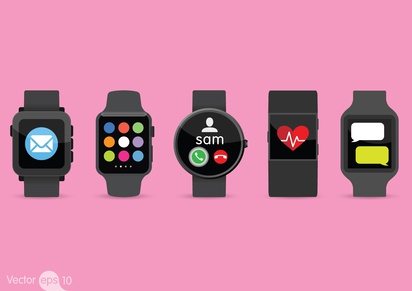In an era of mobile technology, employers will provide their teams with devices tracking their levels of physical activity, including recording the number of steps taken daily. One way to encourage a more active lifestyle but also enhance employee productivity and team cohesion.
Sara Garneau is the director of marketing and innovation at AFI Expertise, a firm in training and consulting. Two years ago, she bought a Fitbit wristband. Her curious colleagues asked her about it and some of them began imitating her. Now, thirty out of the 150 employees working for the company carry their own Fitbit bracelets.
And the company has chosen to pay for the purchase of the tracker to those that have used it for at least three months. The cheapest model, the Fitbit Flex, sells for $120. It includes access to an Internet platform for statistics and to track your progress.
Practical and fun
 A decision motivated by the tracker’s many advantages in the workplace. “This will wake people up, get them active and motivated,” says Pierre Audet, President and Founder of Olympe, specializing in the integration of physical activity into the workplace.
A decision motivated by the tracker’s many advantages in the workplace. “This will wake people up, get them active and motivated,” says Pierre Audet, President and Founder of Olympe, specializing in the integration of physical activity into the workplace.
Besides the number of active minutes, Fitbit measures the amount of steps one takes, ensuring they take the minimum 10,000 daily steps recommended by the World Health Organisation. Having a goal every day is a fun way to be physically active, thus more productive. According to the Healthy Enterprises Group, an active employee is 12% more productive than if he were sedentary. For every dollar spent towards corporate health programs, the return on investment is $3.
A social dimension
Companies that provide or reimburse activity trackers often organize challenges among their teams. At AFI Expertise, employees have challenged themselves to collectively get to 5 million steps per month, an experience that develops team cohesion as well as a sense of belonging. With the Fitbit Corporate Wellness program, it's easy to create virtual user groups and communicate about performances.
Sharing scores, talking about the eve’s walk with colleagues and encouraging one another to get to 10,000 steps every day creates links between employees, even if they are geographically distant. “We have offices in Quebec City and Montreal as well as consultants who work directly with our client companies,” says Garneau. “Fitbit makes it possible to keep track of your colleagues.
This social aspect increases motivation, and in turn, physical activity. According to Fitbit, an employee who is paired up with another user will take 27% more steps than if he were alone, and between 60 and 80% more than if he were not using the Fitbit wristband.
Making life easier for managers
For employers who track their activities, these small devices are valuable allies in implementing wellness programs at work. Planning Zumba classes or running sessions to motivate employees to get physical requires resources, and it is often difficult to get everyone together at the same time.
“Fitbit promotes better monitoring, especially when people do not necessarily have the time to attend group courses,” says Mathieu Drugeon, kinesiologist and project leader and manager at Équipe Altius, which helps companies to implement active living programs. “The success of a wellness program is based on the fact that employees must feel involved, something activity trackers allow.”
Limits
Despite all their advantages, activity trackers are not a magic solution for improving employee productivity. Employee participation is based on their willingness. The employer cannot force teams to use a tracker or join a group where the number of daily steps will be visible to all colleagues.
These devices have also proven to be quite inadequate for some workers. At AFI Expertise, half the people have abandoned their Fitbits after only a few months of use. “It is effective in inspiring people to go for a challenge, but it is difficult to maintain that level of excitement all year round,” states Audet. “People lose interest over time, and you cannot always compete against yourself.”
For it not to become a mere gadget, it is important to integrate the Fitbit as a tool towards a broader strategy. “If someone has it but they have poor eating habits or smoke, the bracelet itself won’t improve their health,” he says. “Nutrition, weight control, posture… All aspects of a healthy lifestyle must be addressed.”
In addition, activity trackers will sometimes inaccurately record statistics, such as lifting weights, activities that still burn calories…